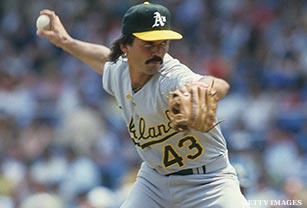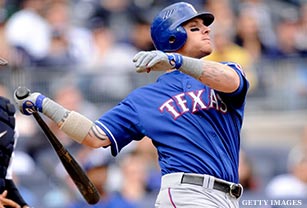Out of baseball in 2010 while battling injuries and obesity, Bartolo Colón looked out of the major leagues for good. But after a successful spring training, Colón has returned to MLB and has the opportunity to contribute for the game's most historic franchise. If he really wants to turn his career around, these guys can help him out:

Ken Griffey, Jr.
From 2000-2004, America watched in horror as its favorite "Kid" disintegrated from head to toe. Injuries plagued Junior’s textbook style of play, capped off by a 2004 injury in which Griffey’s entire right hamstring tore off the bone. To repair the tear, Reds team physician Timothy Kremchek performed “The Junior Operation,” reattaching Griffey’s tendon with three titanium screws. The result: a .301 BA, 35 HR, 92 RBI season in 2005 and the start of five consecutive 109 game + seasons.

Bo Jackson
Jackson was a Pro Bowl running back and an MLB All-Star when he walked into the Los Angeles Memorial Coliseum for a Raiders playoff game in January 1991. When he left, he was diagnosed with avascular necrosis (decreased blood in the femur) after a tackle popped out his hip. Jackson played in just 23 games in the 1991 MLB season before sitting out the 1992 season for rehab (while playing semi-pro basketball). In 1993, Jackson returned to the diamond, launching a home run in his first swing of the year, en route to a 16 HR, 45 RBI season. Bo knew.

Tommy John
In 1974, Tommy John was a 31-year-old southpaw having a career year at 13-3 when he severely tore the ulnar collateral ligament in his left elbow. Although no pitcher had ever recovered from such an injury, optimistic surgeon Frank Jobe entertained John with the idea of replacing the damaged ligament with a tendon from John’s right forearm. Considered insane by fans and players, John went ahead and allowed Jobe to perform "Tommy John Surgery" on his elbow. John pitched for 14 seasons after the surgery (until age 46), winning 164 games and making three All-Star teams.

Dennis Eckersley
During the 1986 off-season, family and friends of Eckersley taped the Cubs starting pitcher as he endured one of his usual drunken nights. When Eckersley watched the tape the next day, he immediately checked himself into a rehabilitation clinic, hoping to deal with his alcoholism, as well as his 6-11 record the previous season. In early 1987, Eckersley was shipped to Oakland, where Tony La Russa hoped to use him as a set-up man and long reliever. Eckersley did a tad better, saving 387 games, winning a Cy Young Award, and bringing a ring to the Bay Area en route to becoming the first relief pitcher ever elected to the Hall of Fame.

Rick Ankiel
In Game 1 of the 2000 NLDS, Ankiel, a 21-year-old rookie sensation, walked four batters and threw five wild pitches in a disastrous third inning. One week later, in the NLCS, Ankiel could not get out of the first, as he threw five balls to the backstop, three of which came with no runners on base. Ankiel walked 25 batters and threw five wild pitches to start off the 2001 season, before being sent to the minors. After Tommy John Surgery and six years in the minors, Ankiel popped back up in 2007 as an outfielder. He hit a home run in his first game as a position player and 25 more during his first full season.

Josh Hamilton
He was the No. 1 overall pick in the 1999 draft, and his games for the Devil Rays minor-league teams were a hot ticket during the early 2000s. Starting in 2001, though, addictions to cocaine and other drugs limited Hamilton’s playing ability and landed him with a suspension from all professional baseball, including independent leagues, from 2004-2006. In December 2006, the Cubs drafted Hamilton with the third pick of the winter’s Rule Five Draft and immediately traded him to the Reds. In the four seasons since, Hamilton has won an MVP Award, two Silver Slugger awards and appeared in three All-Star games.




